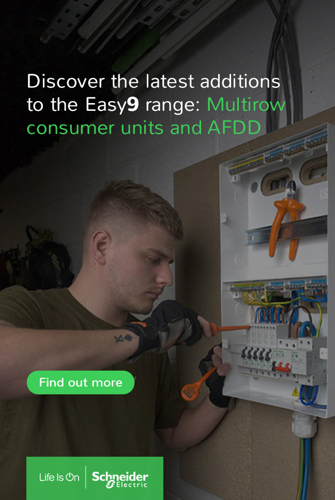
How to futureproof a home for BSI compliance and energy efficiency
So far, 2022 has proved to be one of the energy industry’s most volatile years. From UK homeowners to electricians, politicians to construction workers, no one’s been exempt from a fundamental shift in their relationship with energy.
In April, millions of households saw their gas & electricity bills swell by over 50% as Ofgem raised its price cap, with a further increase expected in October. Meanwhile, the country’s collective efforts to move towards net-zero by 2050 rumble on in the background, with the government indicating that all new-build homes must be still more energy-efficient and produce 31% fewer carbon emissions from 2021.
Even greater efforts are required to upgrade the UK’s existing 30 million homes, which contribute more than 21% of the country’s total carbon emissions. According to the Energy Saving Trust, all houses, new and existing, must achieve an Energy Performance Certificate (EPC) rating of ‘C’ or above if the country is to meet net-zero targets. Similarly, the rate of home retrofitting in the UK (such as installing ultra-efficient boilers, insulation, and consumer units) needs to multiply tenfold if we’re to achieve long-term sustainability.
All these changes might well see British Standards, amendments, and installation rules to enforce higher levels of efficiency. As a result, homeowners and electricians need consumer units that not only meet and exceed the standards of today but can also achieve the possible regulations and energy consumption demands of homes of the future.
Introducing the Easy9 Compact Multirow Consumer Unit
These challenges have led Schneider Electric to launch the transformative, future-proofed Easy9 Compact Multirow consumer unit. This next-generation solution complements the company’s existing Easy9+ range - incorporating flexibility, simple installation, and ample cable space to easily connect multiple devices and ensure regulatory compliance.
Importantly, the unit fully complies with the latest BS 7671:2018 regulations, including 2022’s Amendment 2. It’s also suitable for Arc Fault Detection Device (AFDD) installations with module capacity for larger installations—providing electricians with the ability to tailor the fit to the specifications of any new-build or retrofit project, while leaving wide scope for future upgrades and requirements.
So, let’s explore the unit in a little more depth.
Why Multirow?
Perhaps the headline benefits of Schneider Electric’s Easy9 Multirow consumer unit are its flexibility and ease of installation. It features multiple rows that can have up to 12 modules fitted, with several neutral bars which can be joined or split up to create various systems. Multiple cable entry knockouts provide flexibility to route the cable from top to bottom, and ample cable space makes it simple to connect devices.
Features include a dedicated 5-way comb busbar, which can be trimmed to size and seamlessly distributes both phase and neutral to up to five additional AFDDs, a 100amp Easy9 terminal block to feed the comb busbar and AFDDs and assist power distribution, and a specific cable kit that extends the power from the main incoming switch to the second or even third row in the Multirow.
As a result, configurations with the Easy9 range of protective devices are endless. For instance, you could fit the main switch on the left-hand side of the bottom row, with a surge protection device, an MCB for protection, and a series of RCBOs. You can even feed a dedicated type-B RCD specifically used for electric vehicles. Additional power is distributed to the second and third rows through the dedicated Multirow cable kit, feeding up to five units per individual row. Plus, the Multirow’s three-row variant has the capacity to fit up to twelve 18mm modules on each row, for a total of 36.
But what do they address?
Ensuring compliance with BS 7671:2018 Amendment 2
In March 2022, the BSI, in its role as the UK National Standards Body, published Amendment 2 to BS 7671:2018, which contained a raft of changes for homeowners and electricians. A particular requirement of the Amendment states that type A RCD technology should be standard, as it allows for up to 6 million amps of DC current on the system and will still allow for the effective and safe operation of the earth leakage device.
To aid compliance, Schneider has released the Easy9 AFDD as part of its upgraded Easy9 product range. This single device contains several protections, including overload, short circuit, earth leakage to type A-SI, and a self-diagnosis system to indicate the health status of the device. The Easy9 Multirow and AFDD unit also support compliance with BS 7671:2018 Amendment 2, which requires the use of AFDD in specific applications and electrical installations. But it isn’t just about compliance today—these devices also offer practical benefits for tomorrow.
Meeting sustainable design and energy demands
The Easy9 Multirow maintains the Easy9 range’s simplistic and smart design, with a curved low-profile cover allowing homeowners and installers to place the unit wherever is most convenient without compromising on functionality, scalability, or space. Similarly, the white finish and minimalistic build help the Multirow to seamlessly blend into any environment and colour scheme, so there’s little risk of an interior design mismatch.
Most importantly, the Easy9 Multirow huge capacity allows for the future installation of home energy control & control and automation systems.
With the Easy9 Multirow, homeowners can install these systems to ensure they’re ready to enjoy maximum home energy efficiency, both now and into the future. And as the Energy Trilemma of Sustainability, Security of Supply and Cost takes grip in the UK, and we move ever closer to our net-zero target of 2050, this capacity has never been more important.

